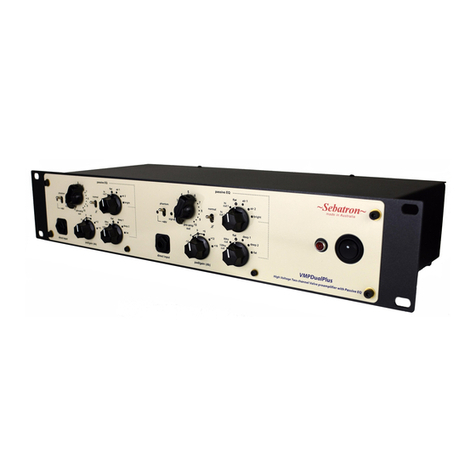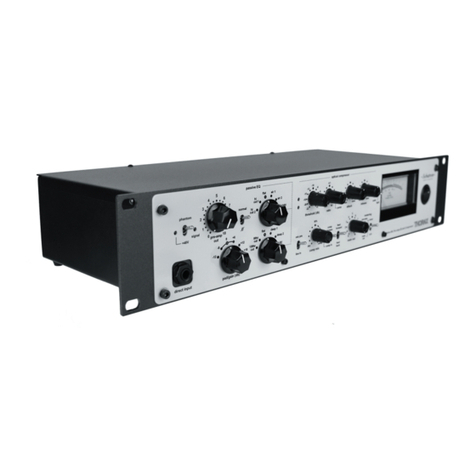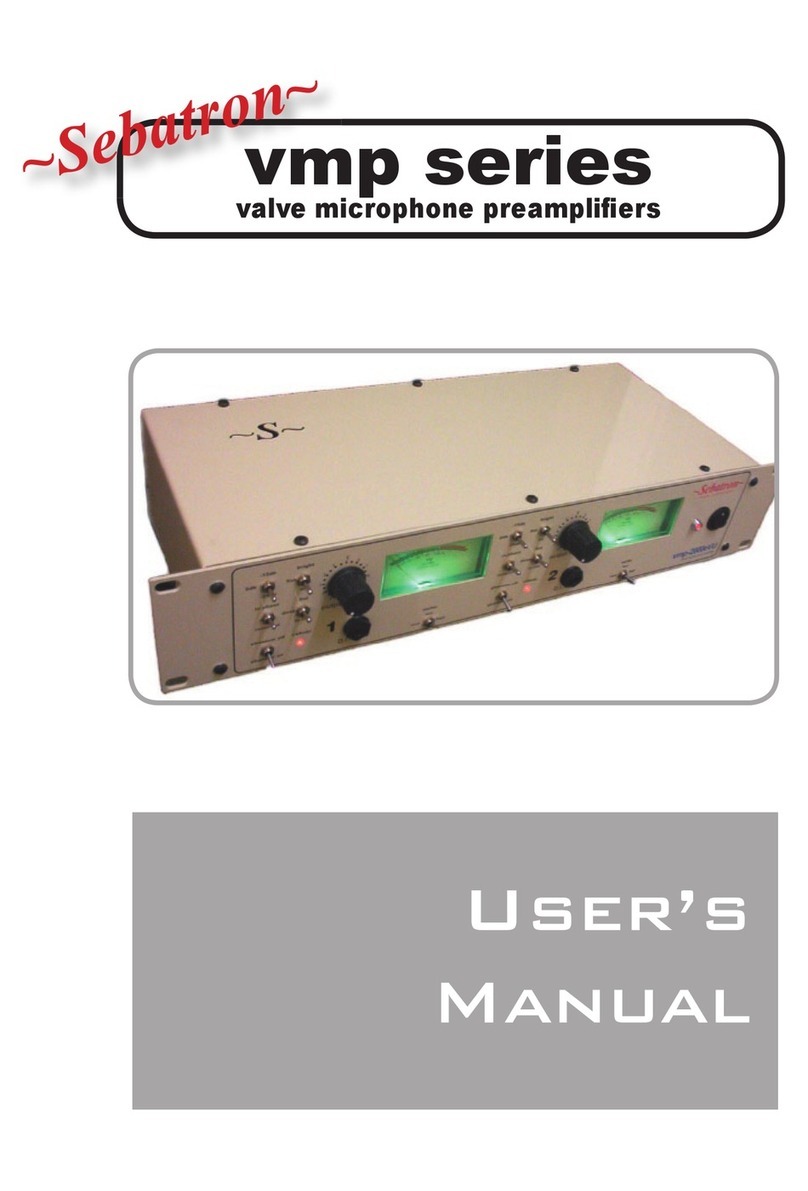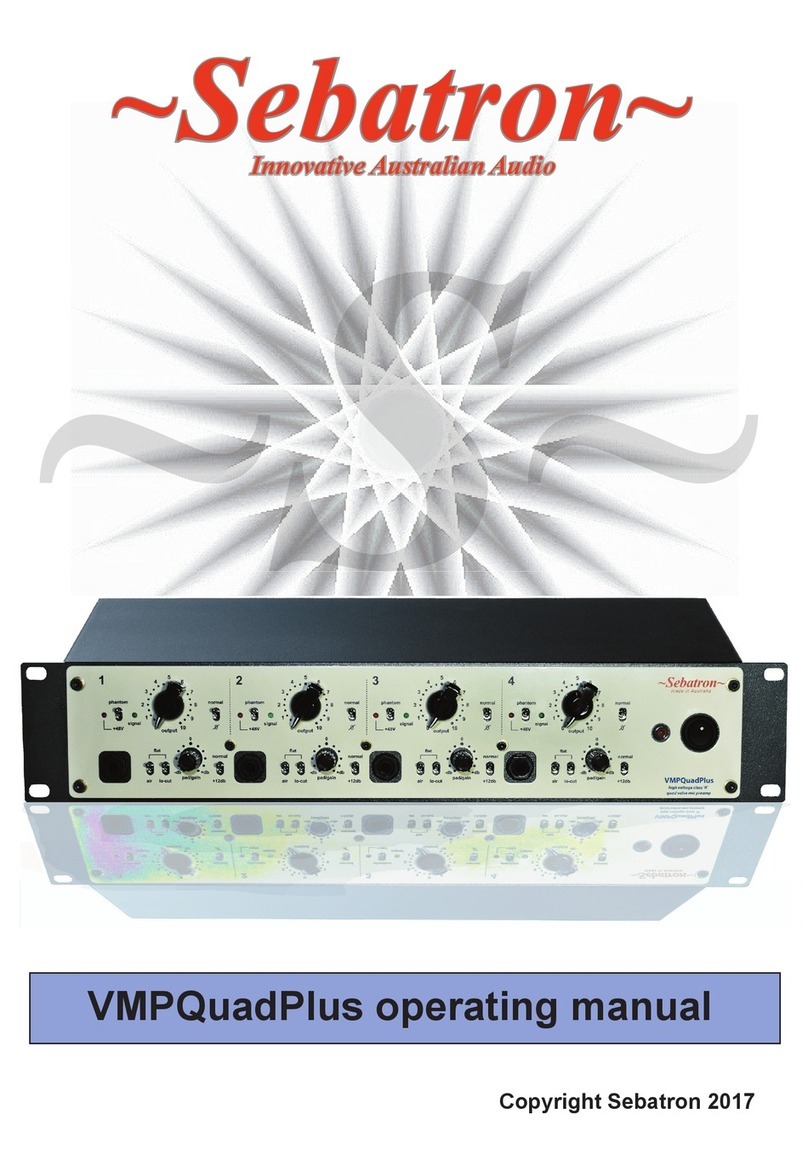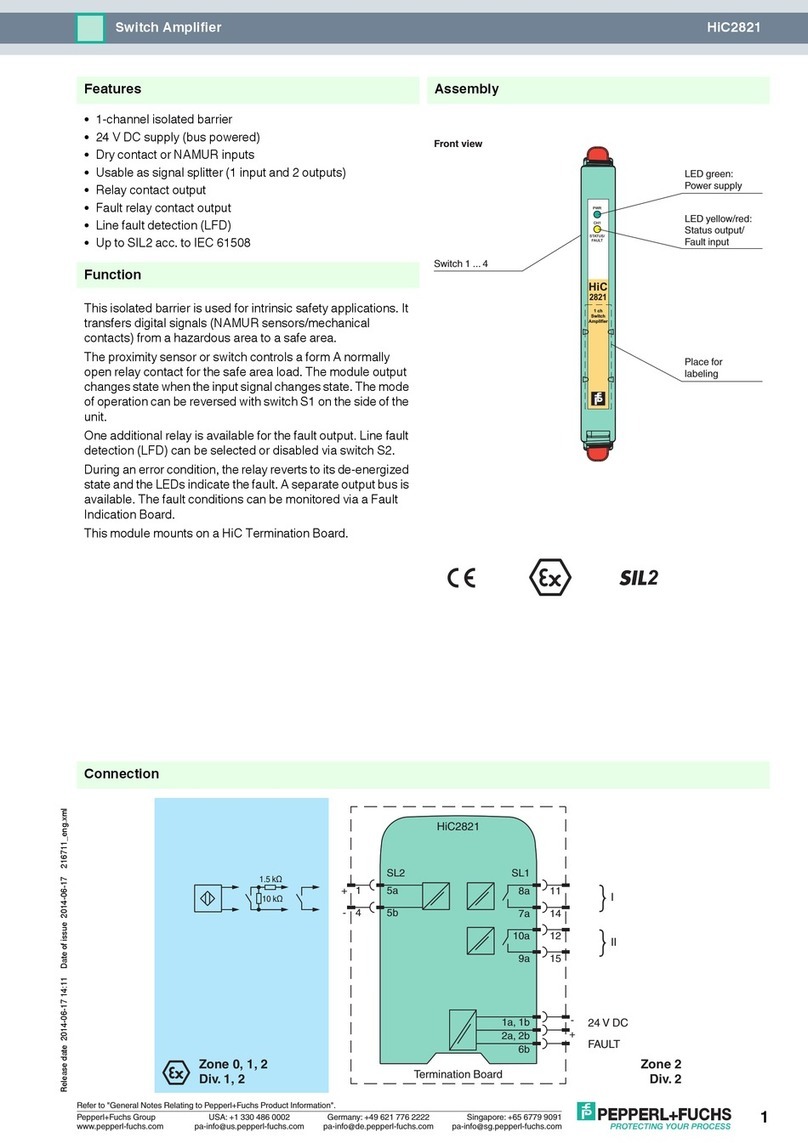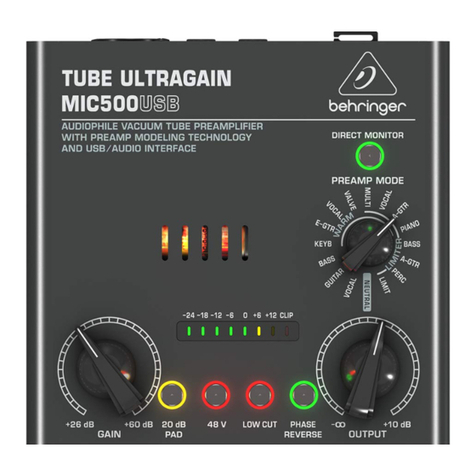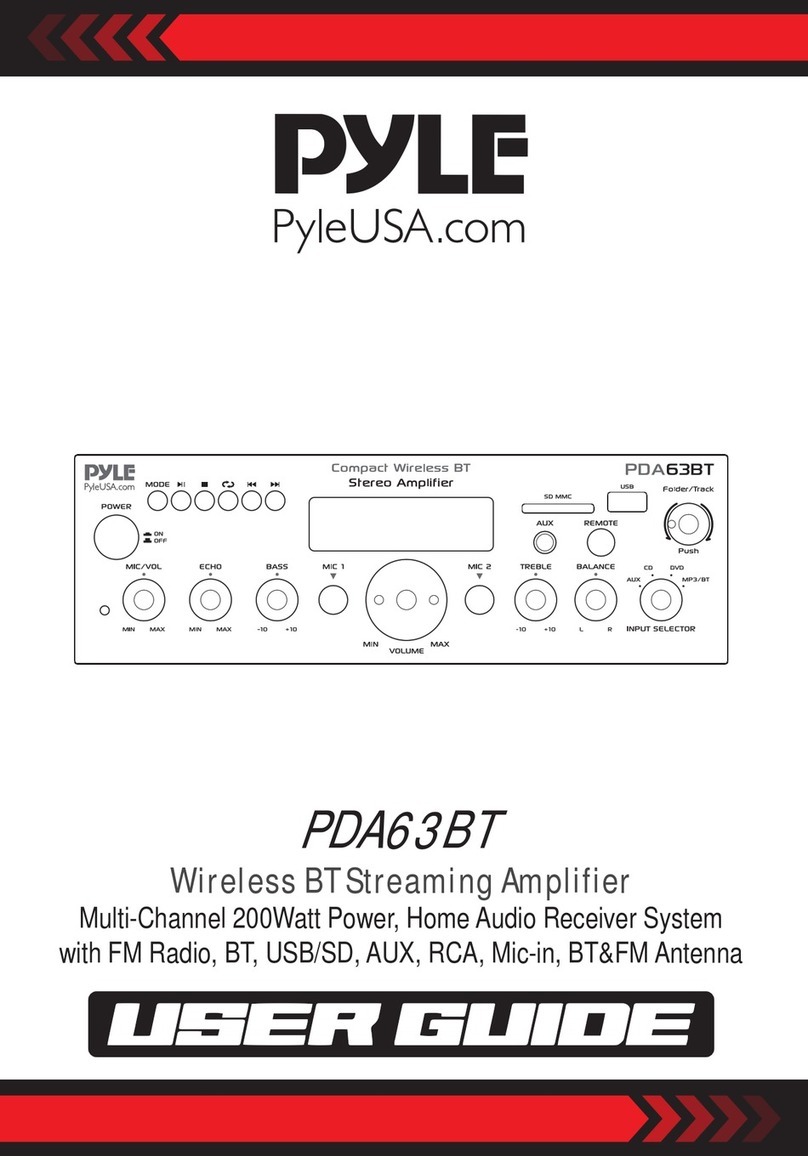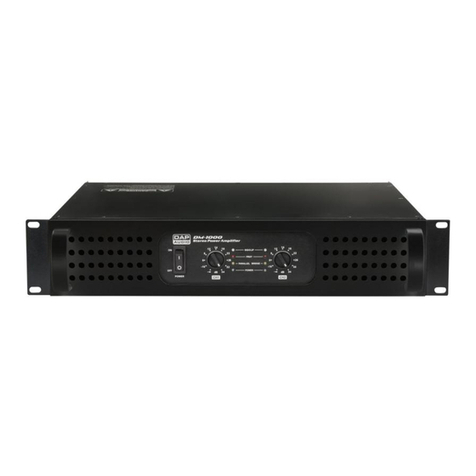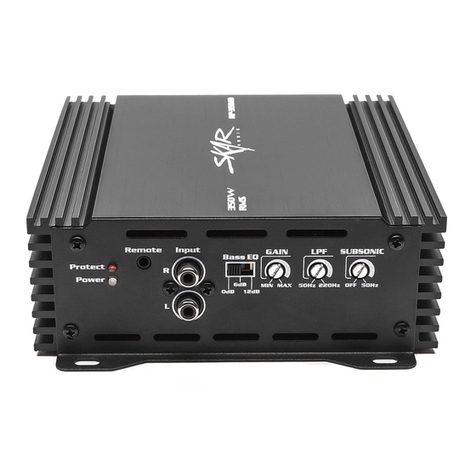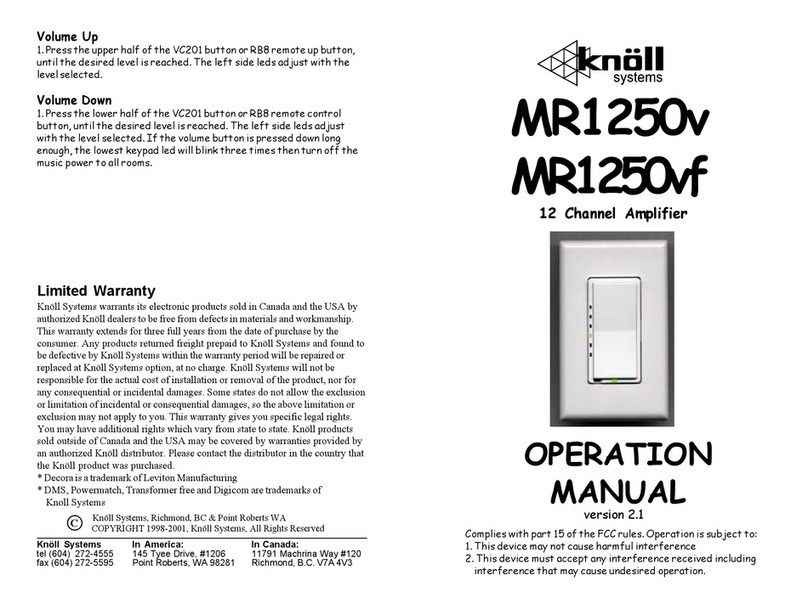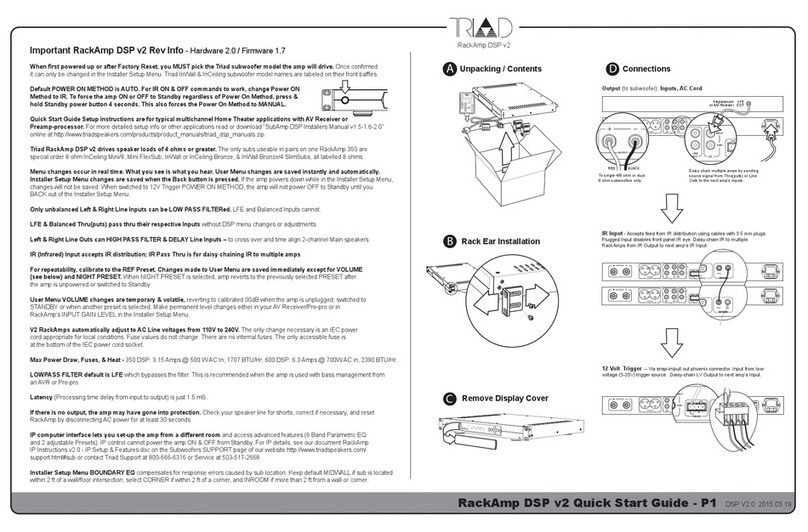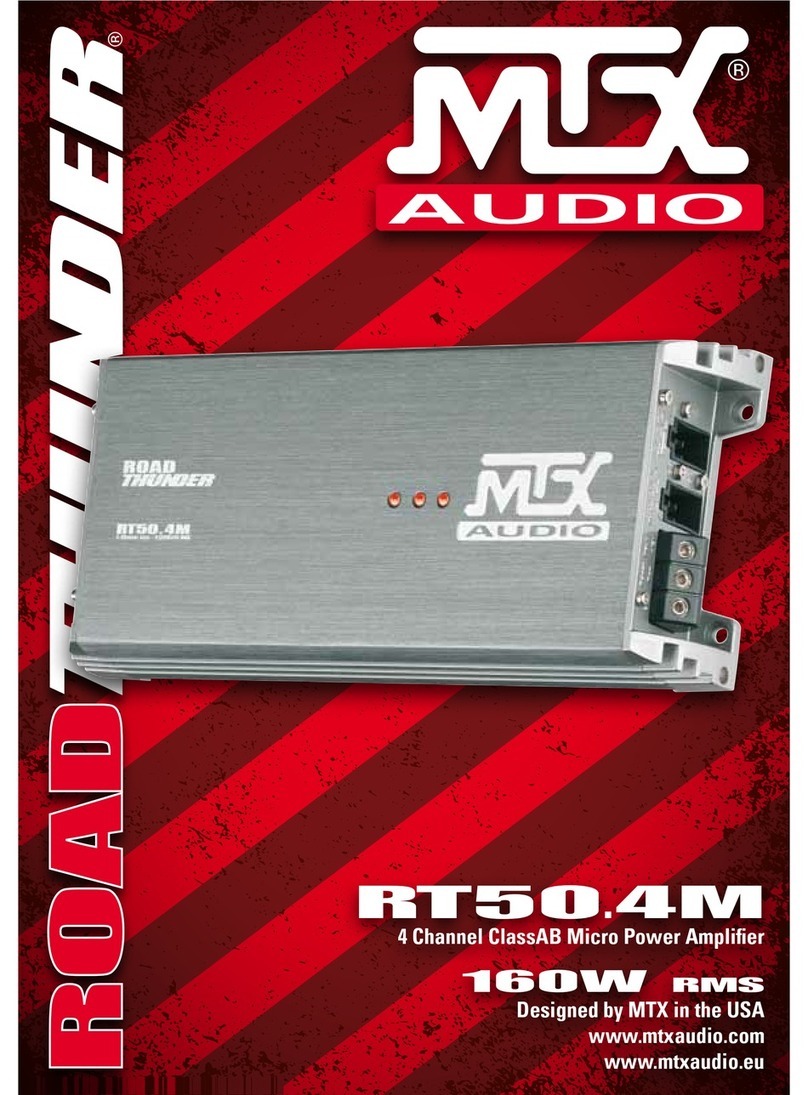Sebatron VAMP four Operation instructions

VAMP four
~S~
VAMP four user Operating Manual
Copyright Sebatron 2015
~Sebatron~
Innovative Australian Audio


1/ Introduction
2/ Features
3/ Input/outputs
4/ Controls and indicators
- Two band interactive Passive EQ
- Pad/Gain control
- LED indicators
- Output level
5/ Using VAMP four
6/ Specications
7/ Maintenance
8/ Safety and pre-cautions
~S~
Table Of Contents :

~S~
The Vamp four is an all-purpose four channel valve instrument line
pre-amplier/direct input device that has a multitude of uses in either a live or
recording situation.
When using the VAMP four as a front end the sound is full , rich and
can be of high harmonic content of which the amount can be completely
varied by the appropriate controls.Nasty peaks are smoothed out without the
loss of top register frequencies and the lower frequencies sound tight and
wide.
Instruments such as bass or guitar sound like they have an organic
glow that tames transients and glues the bottom end for a solid musical
foundation.Synthersizers and keyboards like Fender Rhodes can be driven
into subtle distortion that can loosely resemble tape saturation or a powered
amp and speaker.Drum machines or live drum tracks can be sculpted to
crunch and pump.With the right pad/gain settings and EQ the VAMP four can
take any signal and turn it into a musical delicacy with heaps of character .
The same can also be said of the VAMP four when it’s used as an
audio processor for pre-recorded tracks or as a mastering device. Digitally
recorded tracks fed through the VAMP four seem to sparkle with presence
compared to their un-treated counterparts.Signals sound more focused and
can be either polished with clarity or driven with some subtle distortion
or colour.
Features include high impedance input ,variable gain/pad control , two
band switched passive EQ , variable output level and an electronically fully
balanced buffer that feeds an XLR balanced output and a 6.5mm TRS
balanced phono output that can be used un-balanced as well. All signal path
circuitry is Class A discrete and the only integrated circuits or chips involved
are in the LED driver circuit.
Unlike cheap designs , the valves are run on a proper High Tension
voltage rail with a ltered DC lament.The circuit is based on the Sebatron
designs of AXIS and VMP series preamps.
Whatever the situation , be it live or recording , the VAMP four is an
impressive creative tool.
1/ Introduction

-High Impedence phono input
-Two band (Deep and Air) interactive passive EQ
-Valve driven gain stage running on full high tension voltage
-Variable pad/gain for total colour control
-LED indicator for drive level
-Transparent output level control
-Fully balanced XLR and balanced/unbalanced 6.5mm phono outputs
2/ Features

-Inputs
The VAMP four has one phono 6.5mm unbalanced input socket per channel.
This is a high impedence input suitable for all sources from crystal pickup to
soundcard or tape machine output.
-Outputs
Each channel of the VAMP four has two simultaneous outputs that can feed
two completely independant devices.
6.5mm phono socket TRS balanced and XLR pin#2 hot.
3/ Inputs/outputs

-Two band interactive Passive EQ :
The two band passive EQ is intended as a nal sweetener before the
signal is sent off to the output stage.As these hit the valve circuitry at different
points , enhancement takes place in the amount of harmonic content.The EQ
amounts intereact with the pad/gain control to provide an organic response
curve that includes both air and deep bands.By increasing the pad/gain control
the amount of air is decreased subtlely and the amount of deep is increased
proportionally.
*Air Switch.....Air is roughly situated over 10 khz , the amount of air interacts
slightly with the pad/gain control.As the pad/gain dial is turned up the amount
of Air is reduced approaching a more classic sound.
*Deep Switch ....Deep is below 80 hz and increases as the pad/gain control is
increased (opposite of Air).
-Pad/Gain control :
This function is based on negative feedback around the rst stage of
the valve.With the pad/gain dial turned right down the Vamp four can handle
line signals of over +4dbm.By varying this parameter the amount of colour and
gain can be adjusted.With minimal gain the signal is clean and transparent
and is represented by the green LED.When the gain is turned up the signal
becomes increasingly coloured or distorted and this is evident when the yellow
LED begins to icker or stay on.
-LED indicators :
The LED indicators on the Vamp-Four are designed to give a visual
representation of the degree at which the valve is being driven.
Unlike Transistors and integrated circuits the nature of the valve is not to clip
immediately when driven past its linear region. Rather, valves tend to bend or
‘soft-clip’ any signals that push its input limits.This can have the effect of
slightly compressing the signal and generates warmth to the signal.
To indicate the degree at which the valve is being driven the two LEDs
are calibrated approximately 20db apart which is roughly the window of the
valves linear region.
-Output level :
The output level controls the signal ow to the nal output stage and is
used to properly set amount of signal sent to the next unit in the signal chain.
Additional gain is attained here so that the very front end can run transparently
without the loss of overall gain.
4/ Controls and indicators

~S~
The VAMP four is extremely easy to hook up and use.
1./Apply power and conrm unit is powered up and active by acknowledging
the mains indicator is on.
Allow approximately one minute minimum for the valves to warm up
and begin amplifying the sound. Connect output to destination device.
2./Plug in sound source ( bass,guitar,keyboard etc. ) and adjust pad/gain con-
trol to achieve a reasonable level on the LEDs.
The green LED in particular should be responsive to sounds.To get a
more coloured sound gradually increase the pad/gain control.
When the yellow LED begins to ash , this indicates that the drive
level is in the non-linear or ‘hot’ region of the valves amplifying zone.If you
require more colour simply turn up the pad/gain control.
Use the ‘deep’ or ‘air’ passive EQ switches to sweeten the signal to taste.
3./Adjust output level control for an appropriate reading on your computer or
tape machine etc.
The VAMP four has plenty of output drive to easily interface with
virtually all destination devices. For a full bodied noise-free signal it is
recommended to use balanced cables where possible .These can be either
XLR or TRS phono.
There are two outputs for each of the four valve channels.Each output
can be fed to completely individual units (soundcard and monitor mixer for
example).
If there is a requirement for even more colour or distortion that a single
channel can deliver it is easy and recommended to connect the output of one
channel into the input of another channel using a short phono to phono patch
lead.
With this conguration , the signal chain has four controls to control
colour and texture of the sound as well as the four EQ switches.
5/ Using VAMP four

~S~
-Input impedence : 1 meg approx
-Output impedence : <600 ohms
-Maximum input level : +8dbm
-Maximum output level : +30dbm
-Frequency response : 20hz-60khz +/- 1db
-Number of valves : 4
-Valve type : 12AT7 or ecc81
-Signal to noise ratio : 110 db
-Total gain range : 40-50 db
-Mains voltages : ~110/120 or ~230/240 switchable
-Current consumption : 500ma
-Weight : 6kg Approx
6/ Specications

The VAMP four is solidly built with carefully laid out internal components.
Attention has been paid to correct spacing between components that
dissipate heat and those that don’t to ensure a reliable design.
When not in continous use we recommend the Vamp four be
powered down to preserve valve life.In addition please allow approximately 2
to 5 minutes for a complete warm up of the valves before commencing
recording.This is so the valves can stabilize in the conditions the unit is
powered up in. It’s not cruicial of course and you may wish to use the unit
immediately which is ne also but there still will be a warm up time of around
30 secs before the valves will begin to pass a decent signal.
-Valves 12AT7 ( ECC81 , CV4024 )
Sebatron uses J.J (Brand) 12AT7 or ecc81 valves exclusively in all the
current designs including the Vamp-Four.These valves are favoured because
of their realistic repesentation of the audio spectrum as well as their
low-microphony and open-ended frequency response.
Other recommended brands are : Amperax , Telefunken , Phillips ,
JAN , National Electric , Mullard .
Please note valves vary greatly not just in frequency response or
sound quality but also in noise oor and microphony.
Valve life varies from valve to valve but is generally three to ve years
with average useage and up to ten years if used sporadically and kept in a
good enviroment. As valves approach the end of their lifespan there usually
is a rise in noiseoor ( hiss-noise ) and a narrowing of the sonic bandwidth.
However , usually the difference is negligable and it won’t be apparent until
new fresh valves are installed.If useage is minimal and within 10 hours a week
on average , then we would recommend valve replacement around the four to
ve year mark.Heavier useage , twenty hours a week and upwards for exam-
ple , we would recommend valve replacement within three years. In all cases ,
useage is simply having the unit on , not necessarily passing signals. Even in
an idle state with no signals there are still valves operating and it is
recommended that for general useage that the unit be left on for periods of no
longer than eight hours at a time . If longer periods are required it is recom-
mended that the unit be switched off for at least half an hour for some cooling
to occur before proceeding with the next shift.
7/ Maintenance

-Do not operate unit in moist or wet enviroments.
Avoid moisture and excessive heat.
-Do not remove lid when mains power cord is connected.
-Always replace with same type of rated or recommended fuse.
-Operating temperature range : 0C to +50C approx.
-To prevent the risk of electric shock, do not operate with lid removed.
Do not open when connected to mains AC source.
-Do not expose to dripping or splashing and do not place objects lled with
liquids , such as vases , on top of the unit.
-For proper safety , the unit must be connected to a mains socket outlet with a
protective earthing connection.
-Unit is live even when switched off.Indicator lamp beside the on switch does
not mean the apparatus is disconnected from the mains.
To disconnect completely from the mains supply cable needs to be removed
from the apparatus.
-The mains power disconnect device for apparatus is the appliance coupler on
the rear of the apparatus and shall remain readily operable.
--No user servicable parts inside.Refer service to qualied personel.
-Refer to manual illustration for input and outputs connect.
8/ Safety and precautions

Table of contents
Other Sebatron Amplifier manuals
Popular Amplifier manuals by other brands

Matrix Elements
Matrix Elements GT800fX user manual

Lab.gruppen
Lab.gruppen C Series C 68 4 Specifications
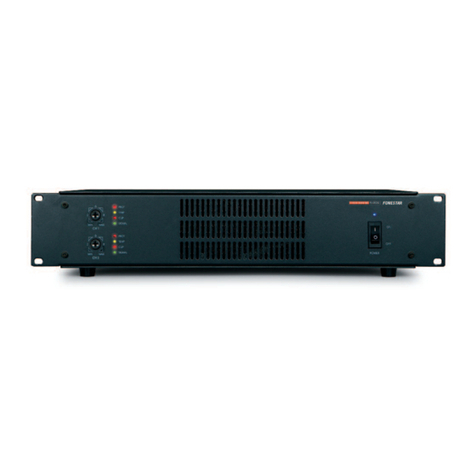
FONESTAR
FONESTAR FS-2503E instruction manual

Gentner
Gentner PA870 Installation & operation manual

Silex technology
Silex technology Multicast Video Distribution System MVDS X-1 Install & user's guide

Camco
Camco Amplifier brochure
